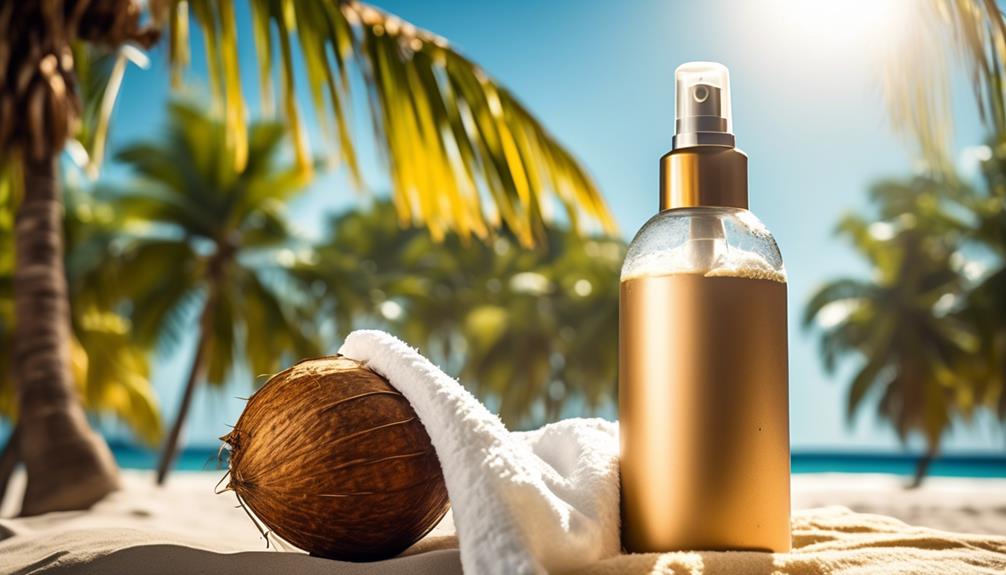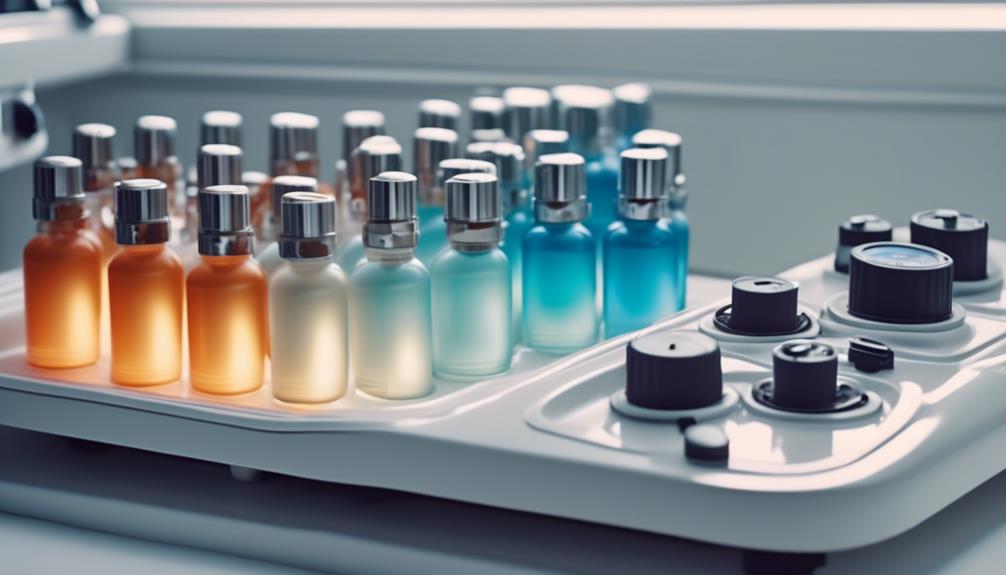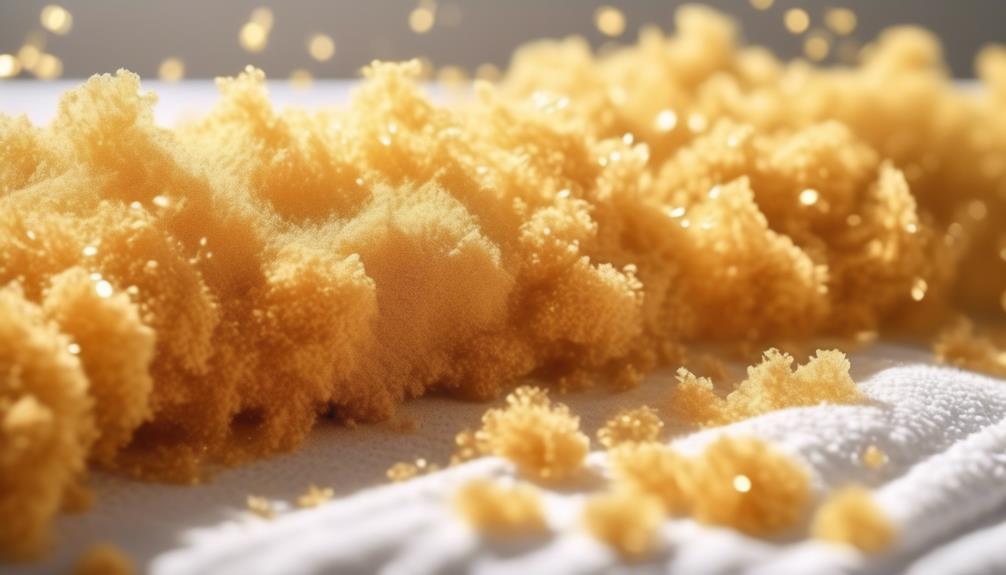Everyone’s skin is different, and what works for your sun-kissed BFF could leave you looking like you’ve had a close encounter with the sun itself. You know you need a game plan tailored to your unique skin type, but where do you start?
Stick around, and you’ll discover how to finesse your tanning time to perfection, ensuring you walk out with that golden hue, minus the ouch.
Key Takeaways
- Fair skin (Type 1) should start with short bursts in the tanning bed and gradually increase exposure.
- Beige skin (Type 2) should gradually increase tanning bed time to build a base tan.
- Medium skin (Type 3) should start with shorter stints and gradually increase exposure.
- Olive skin (Type 4) should start with smaller tanning bed time and gradually increase exposure.
Assessing Your Skin Type
Before you even think about hitting the tanning bed, let’s figure out what your skin’s all about. You’ve gotta know your skin type like the back of your hand. It’s not just about that golden glow; it’s about keeping your skin happy and healthy.
If you’re rocking that fair skin, with freckles maybe, you’re probably a Type 1. And let’s be real, minimal melanin production means you’re more BFFs with the sunblock than the sun itself.
Skin types vary, and so should your tanning time. Those with fair skin need to play it cool with UV exposure. You don’t wanna overdo it and end up looking like a lobster, right? Starting slow and low is key. Tanning experts are all about that personalized tanning plan to match your skin tone.
And remember, your skin tans at its own pace. Don’t race against the clock; listen to what your skin’s telling you. Those exposure times aren’t just numbers; they’re your guide to a safe, sun-kissed look.
Tanning Bed Time Guidelines
Knowing your skin type is just the start—now let’s nail down those tanning bed times to get you glowing without the ouch. You’ve gotta be savvy with your sessions to dodge skin damage and get that sweet, sun-kissed look.
The below mentioned table categorizes different skin types and provides recommendations for indoor tanning based on each type’s specific needs.
| Skin Type | Tanning Recommendations |
|---|---|
| Type 1 (Ivory) | Start with short bursts in the bed, gradually increasing exposure to avoid getting sunburned. |
| Type 2 (Beige) | Build a base tan by increasing tanning time slowly. Begin with brief encounters and gradually increase exposure. |
| Type 3 (Medium) | Start with shorter tanning sessions and gradually increase time to maintain a cool approach. |
| Type 4 (Olive) | Begin with smaller sessions and gradually increase indoor tanning time to achieve a glow-up without overexposure. |
| Type 5 (Honey) | Longer tanning sessions are suitable, but a gradual approach is still recommended to respect the rays. |
Indoor tanning can be a desired method to achieve a golden complexion, but it’s important to approach it responsibly and consider individual skin types. The provided markdown table categorizes different skin types and offers specific recommendations for each type’s indoor tanning journey. Following these guidelines can help avoid sunburn or overexposure, ensuring a gradual and safe transition to a desired tan.
Using the Right Bronzer Lotion
To turn up the heat on your tan game, snag a bronzer lotion that’s basically your skin’s new BFF for those tanning bed vibes. But , it’s not about slapping on just any old thing. We’re talking a match made in heaven with a bronzer lotion that’s tailored just for you.
Think customized tanning that vibes with your skin type. The perfect tan is all about that glow safely mantra, so you’ve gotta pick a potion that’s got the good stuff – nourishing ingredients and DHA for a color that’s not just deep, but also natural-looking. These tanning lotions are like the secret sauce to an even tan that lasts.
Before using tanning beds, exfoliate like a boss to get your skin prepped. Then, work that bronzer lotion in. It’s all about maximizing your tanning bed time for results that’ll have you winking at your reflection. And don’t forget your protective eyewear, ’cause safety is sexy, right?
Protecting Your Skin
Let’s talk skin safety – because rocking that tan shouldn’t mean playing with fire when it comes to UV exposure. You’re after that sun-kissed glow, but let’s keep it cute by protecting your skin. No one’s here for skin cancer scares or premature aging, right? So, I’ve got you covered with a skincare blueprint for that bronzed beauty look without the ouch.
Here’s some tips to consider:
- Start Slow: Ease into your tanning regime. Gradually increase those bed times to kiss sunburn goodbye and say hello to a lasting, even tan.
- Stay Hydrated: Slather on those indoor tanning lotions or moisturizers. They’re like a tall drink of water for your skin, keeping it plump, happy, and less prone to peeling or irritation.
- Space It Out: Don’t rush greatness. Schedule salon visits with care to minimize overexposure to those UV rays. Your skin health will thank you.
- **Exfoliate: Prep your canvas. Buff away the dead skin cells for a smooth, even glow. It’s all about that base.
And never forget those peepers – shield them with goggles because eye safety is non-negotiable. Now, go get that glow, safely!
Post-Tanning Skin Care
After you’ve rocked the tanning bed, it’s crucial to give your skin some TLC to keep that golden glow going strong.
Your post-tanning skin care routine is your secret weapon against dullness and dehydration.
Grab a mild soap and give your skin a gentle cleanse. You’re not just washing away the day; you’re prepping your skin to soak up all that hydration you’re about to lavish on it.
Pat yourself dry with the softest towel you’ve got—your skin deserves it. Then, slather on a post-tanning bed moisturizer like it’s your job. This isn’t just about feeling soft; it’s about keeping that tan looking fierce. And don’t forget to chug that H2O! Hydration on the inside radiates on the outside.
Now, let’s talk longevity. You want to keep that tan turning heads, right? Grab a tan extender from the Premier Collection. This isn’t just any moisturizer; it’s a hydration hero that keeps your tan living its best life.
And remember, whether you’re a spray tanning enthusiast or a sunless tanning products aficionado, protecting your unique skin type is non-negotiable. Because while a natural tan is totally hot, skin aging and an increased risk to your health? Not so much.
Frequently Asked Questions
What Is a Good Tanning Bed Schedule?
Well, start slow and ramp up gradually. You’ll want to listen to your body and avoid turning into a lobster. Keep those sessions short at , especially if you’re fair-skinned.
Moisturize like a boss and always rock those funky goggles. Remember, it’s all about that golden glow, not a sunburn marathon.
Play it cool and safe, and you’ll be rocking that tan in no time!
Do Sunbeds Work on All Skin Types?
Sure, sunbeds can work on all skin types, but you’ve got to play it smart. Your skin’s unique, so what works for your bestie won’t necessarily cut it for you. You’ve gotta ease into it, especially if you’re on the paler side.
Protect those peepers with goggles, and always moisturize after. Remember, overdoing it’s a no-go.
Find your vibe, stick to a plan, and you’ll get that glow without the ouch.
How Many Times Do You Have to Use a Tanning Bed to See Results?
You’ll see a change after just a few sessions, but it’s super personal.
If you’re a newbie, start slow, maybe a couple of times a week, and watch your skin. You don’t wanna overdo it and end up crispy.
Listen to your body, and you’ll find that sweet spot for the perfect tan.
How Do I Know My Skin Type for Tanning?
Check how your skin reacts to sun: do you burn like toast or bronze up like a goddess? If you’re quick to redden, you’re probably a Type 1.
A little more resilient? Maybe a Type 2. If you tan with ease, you’re likely a Type 3 or higher. Knowing your skin’s vibe is key to nailing that perfect, glowy tan.




